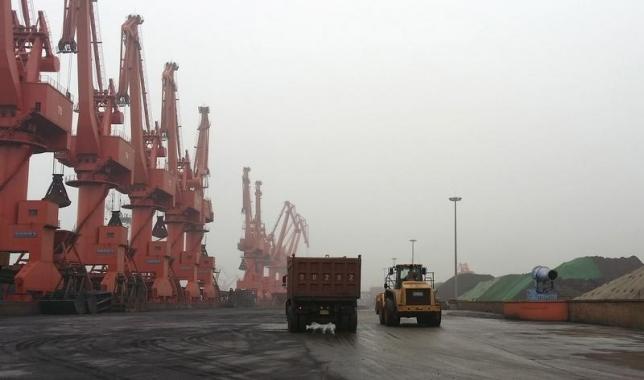Amin Hadi (Johannesburg, South Africa)
China’s economic slowdown has had a tremendously negative effect on the health of the world economy. What is much less known is that the sharp fall in commodity prices since 2014 is also correlated with the slumbering performance of the Chinese economy. This fact has had severe consequences for many commodity-dependent countries, many of which are emerging or developing economies.
Economists point out that there is a clear correlation between Chinese GDP growth and commodity prices. For example, at the beginning of the millennium, while Chinese growth was accelerating, commodity prices were rising as well. In contrast, the growth of the world’s most populous economy has since 2011 slowed down while energy prices have fallen by 70 percent, metals prices by 50 percent and agricultural commodity prices by 35 percent.
Although some analysts suggest that China’s economic slowdown is a key driver behind the collapse in commodity prices, new research suggests that we need to look at the bigger picture to really get a good understanding of the recent developments in the global markets. While China is certainly a major consumer of coals, metals and pork, with about a half of the global consumption, in other commodities, it lags behind. For example, it counts for less than 20 percent of the world consumption of sugar, poultry, wheat or beef. Interestingly, oil and natural gas, which are the commodities whose prices have plummeted the most, play only a minor role when it comes to their imports to China.
Moreover, a substantial part of the commodities China imports is subsequently used in the production of goods that will be later exported to other countries. Therefore, if commodities that are used for the export-manufactured goods were subtracted from China’s overall commodity consumption, China’s impact on the commodity markets would be reduced. Nevertheless, despite the fact that the growth of the Chinese economy has slowed down, China’s commodity consumption is still much higher than that of other major economies. As a result, China’s share in global commodity consumption has been on the rise. Needless to say that China’s “slower” growth still means a rate of more than 6 percent.
Putting the numbers aside, China’s economy is first and foremost undergoing a shift towards a more consumption-driven growth. This means that demand for energy and metals will likely slow down but demand for food and other agricultural commodities and products will grow. Therefore, commodity exporters should not be overly concerned about the impact of China’s changing economy on the markets especially if its growth rate is to go down even further.
However, it is important to keep in mind that although China is an Asian economic giant, there are other Asian economies that are getting increasingly important when it comes to both regional and global influence on the markets. India’s and Indonesia’s growth rates are expected to accelerate in the coming years and growth in their commodity demand will only begin to accelerate accordingly. If the growth rate of economies such as India or Indonesia will continue rising over next 10-15 years, it will bring about a commodity demand similar to that of China’s growth halcyon days. This will also mean that the pool of commodity influencers will increase, which will inevitably lead to new dynamics in the commodity markets.
For the time being, it is only fair to say that China’s influence on commodity markets is tangible. However, it is not fair to say that China is the only one to blame for the massive drop in commodity prices worldwide. Still, given the ongoing re-structuring of Chinese economy and the rising economies of other Asian countries, the future of the world’s commodity markets seems to be a bit more complex and multipolar.




